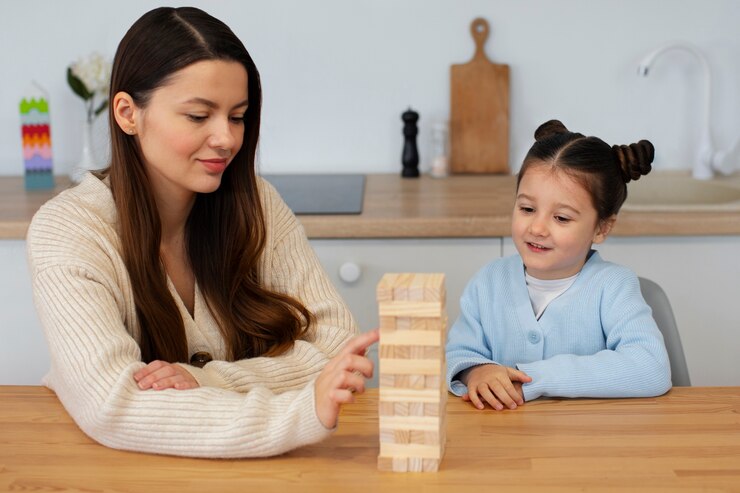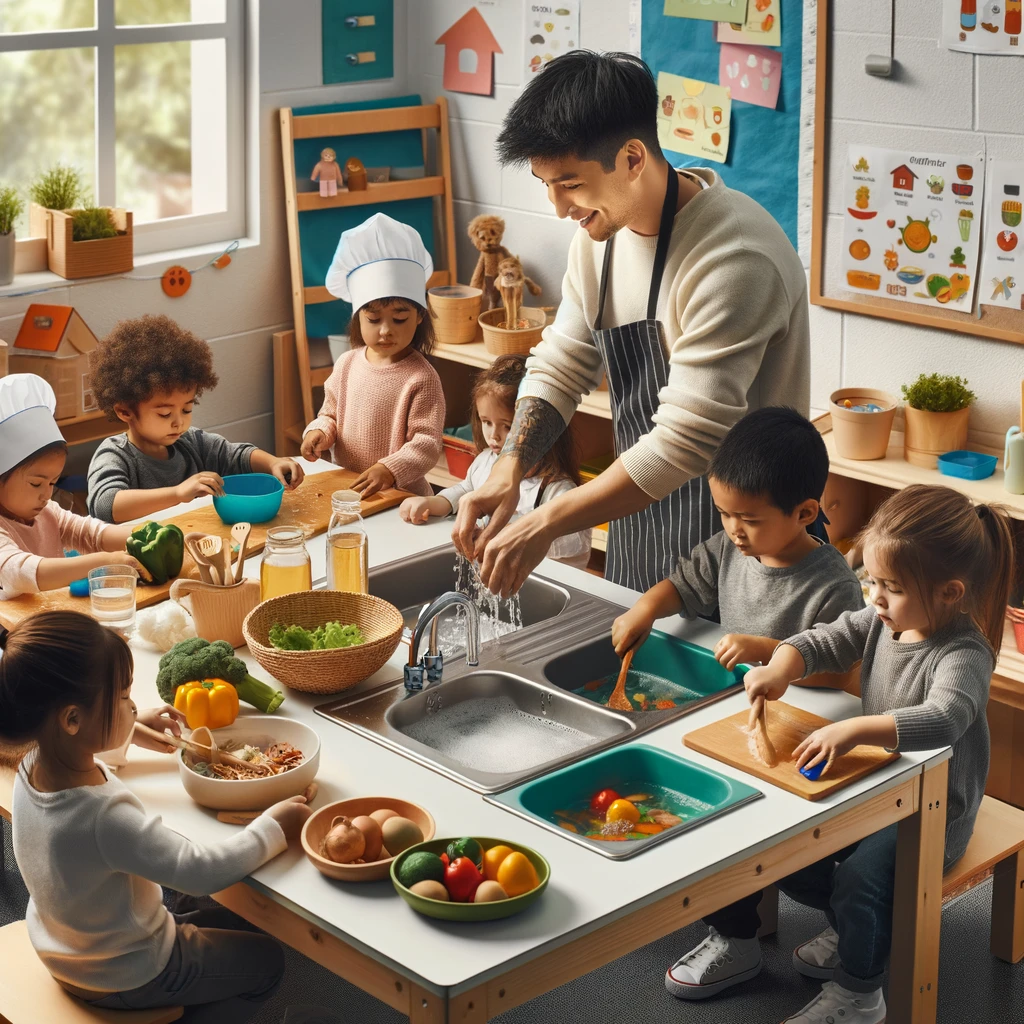Exercise of Practical Life Montessori sporting activities are foundational activities in Montessori schooling, designed to help children expand independence, coordination, awareness, and a experience of responsibility. These sporting events mimic everyday duties and are categorized into 4 foremost areas: care of self, care of the environment, grace and courtesy, and control of movement.
Care of Self includes activities like dressing, grooming, and private hygiene, coaching kids to take care of their own needs. Care of the Environment consists of cleaning, gardening, and maintaining the lecture room, fostering recognize for surroundings. Grace and Courtesy makes a specialty of social interactions, assisting kids research well mannered manners and respectful behavior. Control of Movement includes sports like pouring, moving, and walking on the road, enhancing motor talents and frame recognition.
Through those activities, kids not only gain practical competencies however additionally construct confidence, self-discipline, and a love for gaining knowledge of.
Principles of Exercise of Practical Life Montessori
-
Choosing Activities
- In choosing cleaners appropriate for the different exercises, care must be taken to select those that are non-toxic if taken internally. Cleaners that are sprayed must not be used, as it is harmful to breath air containing droplets of these cleaners. Household spray paints also must be used with children around, for the same reason. The best cleaners for the job should be used with this provision in mind.
- All tools, clothes, sponges, and utensils must be attractive and of good quality.
- Brushes, brooms, knives, etc, must be of the right size for the child’s use. But they should not be toys. All tools must function well.
- Everything’s must be kept clean. For example, broom, and washing occasionally.
- There must not be more than the basic minimum. No one can choose from too many projects, or be orderly when there are too many things.
- The exercises taught must be done in the way the children see them done in their own homes. In each country there are variations in the tools and the methods used. For example, in England, a long handled hair broom is used. In Africa, a hand brush of straw or twigs is used and the women stoop double when sweeping. Although each method is equally good, it would be unrealistic to teach the children the method of a country they do not live in.
Setting Up
- The practical life area must have a place for everything within reach of the children. For example, hooks to hang the brooms, dust pan, mop, duster, and aprons should be within easy reach of the children.
- The practical life area is best arranged near the sink, as water is needed for some of the activities. There should be a double sink as there is in a modern home in the United States. It is important that the child has just the things he sees used in his house.
- In setting up a classroom, provision must be made to practice all types of housework the child sees done at home. Furniture of all types must be chosen with various surfaces. In this way, children can learn to clean some plain unvarnished wood, some polished, and some painted surfaces. In the same way, things used in the must include some made of brass and silver so that children can learn how to polish brass and silver. These objects must serve a useful purpose in the school so children feel they are doing important, real and necessary work. These materials should not be provided in the room only as exercises, but to serve other useful purposes as well. In addition to cleaning various types of furniture and fixtures, children need to learn to wash various types of fabrics. Aprons, dusters, dish towels, etc., should be chosen so different fabrics are represented like linen, denim, cotton, etc.

Presenting Activities – Guidelines of Exercise of Practical Life Montessori
A. For all practical life activities, teachers and children should wear aprons and roll up their sleeves
. A child wears plastic aprons and rolls up his sleeves when he does any exercises using water or polishes. The plastic aprons will so far all of the exercises except for the cooking activities. For these he should wear a clean white apron.
B. The child always shown how to work without making a mess
The child should stand a little away from a table or sink so as not to lean his stomach on a wet surface and get the apron wet and soapy.
The child is also shown how to clean up after an exercise and is encouraged, but not forced, to do so. A child is shown how to put material away, rinsing and drying where necessary, and how to hang up the apron. If he has spilled water, or made any mess, he wipes it up. It takes some children a little while to get used to cleaning up if they have not done so in their own homes. The teacher can give any help the child needs. They are helped and encouraged to be orderly but never forced. A good example is needed so the teacher must cheerfully join in and do her share.
C. When giving a lesson,
The teacher will point out the directions on the cleaning agent container to the child. If there are directions written in red, she will tell the child that these are most important and should be read first. For example, perhaps it says, “Do not near an open flame. “The teacher explains that the liquid must be volatile and what might happen should the direction be ignored.
Naturally she does not frighten the child and assures the child that it is perfectly safe to use it in the school as there are no open flames there. If it says, “Shake the bottle well. ”This is done ( the child having previously been taught how to shake a bottle). When certain measurements are involved, these must be adhered to. In this way, the child learns to work correctly and to make the best use of the cleaning agents.
D. Preparation for presentation
Practice each activity enough so that you feel very secure with the material. This security will enable you to be flexible in your presentation with each child. Flexibility is the key. There is no right or wrong way to present. Some ways are simply better and more efficient.
E. Purpose:
The purpose for demonstrating materials is for the teacher to reveal to the child the possibilities for learning inherent in a particular activity. The teacher acts as a catalyst to get the child involved in an activity, and is the integrating link between the child and the material. The key is to provide this link through the medium that the child is most likely to absorb – quite demonstration. Demonstration combined with complex language may leave the child confused; whereas nonverbal demonstration allows the child to perceive more readily the possibilities for learning and skill development inherent in the material and to focus on the interest other than the teacher.
F. Procedure
- Give lessons in a relaxed, happy, gentle manner.
- Model courtesy, quiet and graceful movements, enthusiasm, zest for learning, a helping spirit, and a positive and pleasant attitude about work.
- Show the children how to perform each exercise, using as few words as possible and demonstrating as you limit movements to only those that are essential. Keep the lessons short and simple.
- Follow a flexible sequence when introducing exercises.
- Invite the child. Tell him what you are going to demonstrate.
- Take the child to the place where the material is stored.
- Carry the material to the work area.
- Demonstrate the activity .
- Show the child where to return the material when the activity is completed. Tell the child she can now use the material whenever she likes.
Make sure children are aware of potential danger and safety requirements.
Show the appropriate use of tools which chances of harm. For example, in cutting, the child should be shown the dull and sharp side of the knife and proper use.
When directions are involved, such as silver polishing, read these with the children.
Evaluation
Observe children at work to determine when activities need to be simplified, when the environment needs to be modified, and what is currently catching the interest of your children. Remove activities that are no longer being used.
Observe children at work to determine when activities need to be simplified, what the environment needs to be modified, and what is currently catching the interest of your children. Remove activities that are no longer being used.
- Watch to see if a child uses the material appropriately. Make a mental note when a lesson needs to be reintroduced or demonstrated. Repeat lessons as needed. Expect that the children may need periodic demonstrations. The teacher would not disturb the activity of the child at the point of the observation. S(he) would reintroduce the activity at a “neutral”time. This is a sensitive way of protecting the child’s ego and zest for learning. We never want the child to feel defeated.
- Appreciate the concentration, the mastery, and the work that goes into performing the simplest of tasks. Do not interrupt when a child is concentrating. The child who is involved in learning a skill will practice it over and over because s(he) is acting to develop an ability – not to get the job done.
- Periodically ask yourself: Are the materials being used in constructive and useful ways? Do they facilitate the development of a skill? Are they realistic? Are they purposeful, and do they lead to independence, personal and social responsibility, and development of self esteem through increased competence?

For convenience we divide EPL s in following areas;
- Personal care
- Grooming
- Dressing
- Preparing food
- Care of the Environment
- Care of surfaces
- Care of materials
- Care of plants and Animals
- Grace and courtesy
